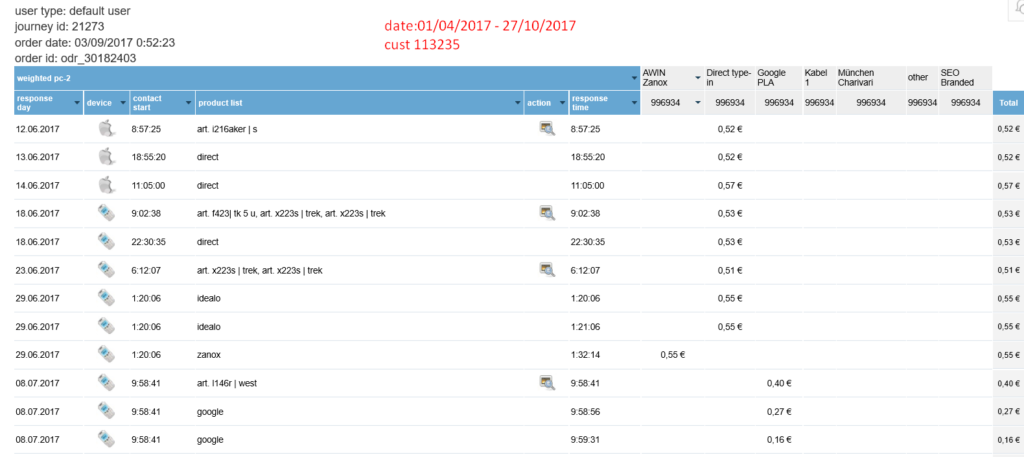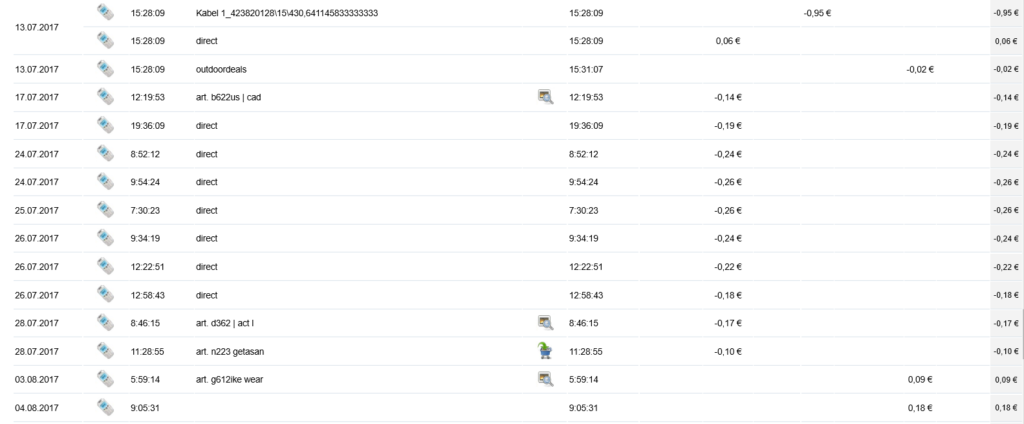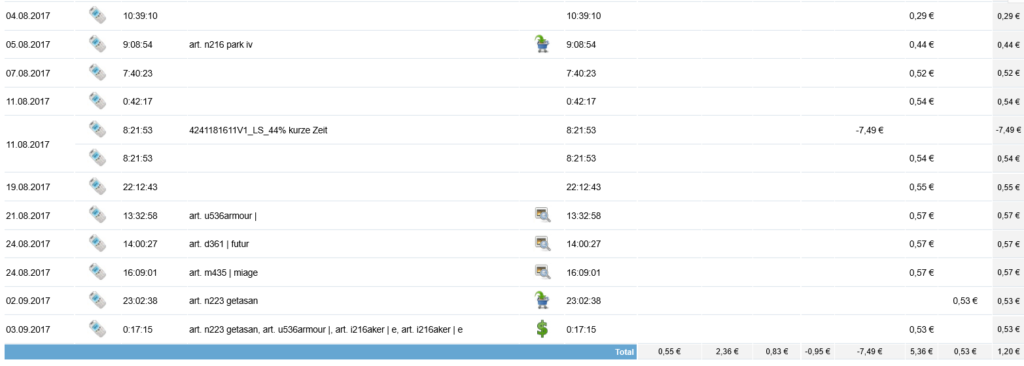
incuda provides a Business Intelligence (BI) platform and expertise for retailers and supports them in going from data insights to full governance of strategy, tactics and operations. We enable fast change from a traditional retail business to data-driven business. We help our clients to stay focused on business by handling:
– End-to-End Business Intelligence transition
– Data integration
– Business Intelligence operations
Our customers can benefit from our retail focused platform as well as market ready, proven, and agile solutions which can be adapted to their business needs in no time. The flexibility and openness of the platform enables further extensions and customization on demand.
At incuda we believe that data not only helps to drive change, but also supports in making better decisions every day.
Marketing attribution has been a longstanding challenge for businesses. In the past, marketers only needed to focus on a few key channels: television, print, Google search, perhaps display advertising and could rely on simple models such as first or last touch attribution or a simple bathtub model to report on campaign success and failure.
The central problem with such simple attribution models is that they fail to provide a correct and fair picture of customer behavior in a world with a growing number of channels. Where the models have been good enough for a marketing mix in 4 channels, with now 10+ channels, it is giving undue credit to some channels, and ultimately resulting in an inefficient use of marketing spend.
For example, traditional last-click models disproportionately attribute conversion revenue to coupon sites, because customers often search for discount codes as the last step in their journey and land on coupon websites. However, this process fails to consider the individual’s decision-making journey prior to searching for discounts from opening email newsletters, to reading about a sale on the store website.
However, the growth of new platforms and channels have left many executives rightfully asking where their marketing efforts are paying off, and where the marketing spend could be better re-invested elsewhere. Most marketers understand that customers respond to multi-touch marketing campaigns, but they continue to struggle with measuring the effectiveness of each channel.
incuda’ BI platform offers a solution that addresses many of the common challenges mentioned above. Our marketing attribution is built on top of a journey model that consolidates users along different channels and devices, which focuses on providing a view of every user (visitors, prospects, customers) that a business interacts with, tracking touch points across different channels and devices. incuda integrates data from different channels: online, offline, CRM (open events and cookies), paid and unpaid to build a unified view of each individual’s history, as can be seen in Figure 1:



Figure 1 Visual on single customer journey or on all journeys of a given user
We believe that we offer one of the highest capabilities to integrate a wide range of channels and devices, including: online visits, mobile traffic, store visits, call center
calls, letters, catalogs, online search, product portals, email open and click events, display, retargeting, TV, out of home, magazines (and more).
In our experience, the complete picture of user contacts across channels is more critical for a precise measurement of marketing success than a fancy attribution curve. The attribution logic adds value when the channel integration is done.
In addition to tracking these high-level activities and interactions, the incuda platform collects data associated with each activity as well. This information is incredibly useful in understanding the customer journey. For instance, in the case of purchases, this data includes line items of the order, quantity, unit price, cancellations and returns, product cost, raw margin and profit contribution. This allows marketeers to measure and optimize their channels based on net revenue or profit contribution, which is critical in business models with higher return rates, e.g. fashion or designer products.
Also, different attribution models can be defined for separate user segments, e.g. an acquisition-based approach for new customers and a conversion-based approach for existing customers. Because we integrate also the backend-data, the system can separate prospects from customers with high precision.
Using this data, marketers can then generate analysis to see how different touch points lead to sales conversions. For example, marketers might count the number of people that go through the following actions in the span of a few minutes: These would represent individuals who were actively searching for a specific product and were keen to buy the product and in this case, attributing the success of the purchase to SEO is an accurate approach.
In addition to tracking these high-level activities and interactions, our customer uses contact and performance data on single user level to enrich data for his real-time customer targeting platform (Tealium). This is associated with cost and profit data on user level. This information is incredibly useful in understanding the customer journey and allows for in-depth analysis of marketing success across demographics, purchase amounts, device usage, and improve the ROI of marketing campaigns.
For instance, in the case of purchases, this data includes product master data (category, brand), cost and profit on product level. Which focuses on providing a holistic, 360-degree view of every user that a business interacts with, tracking touch points across different marketing channels to better optimise and target customers, products and sales offers.
How are we different from Google Analytics (GA) or Adobe Marketing Cloud (AMC)?
▪ Widest range of integrated channels (online, offline, onsite, offsite.)
▪ Detail data access for pushing campaigns and other activities.
▪ Performance metrics on net revenue and profit contribution.
▪ Fully customizable attribution logic, champion challenger models.
Moving to data-driven attribution provides many advantages over single source models, from more equitable revenue attribution to better insights around user drop-offs. Some of the benefits include:
Attribution based on your Marketing Strategies:
Our Marketing Attribution takes a detailed look at each individual part of a marketing strategy. This allows marketers to make marketing strategies that are truly effective on every level. Marketing strategies have evolved to be multi-channel: When marketers go to execute their marketing strategies, for example, “Acquiring new users & prospects or Conversion for existing customers,” they need a way to measure their customers’ journeys with precision. But, first click fails to give you the whole story.
Faster growth booster:
Did that customer convert because of an advertising campaign, or an e-mail newsletter, or that discount banner posted on the website? Likely, the purchase was driven partly by all three actions, and not just the last one (as last-click attribution would see it). Through incuda, marketers can finally move beyond first- or last-click attribution models and provide more accurate conclusions for marketing attribution based on data about customer activity and history.
Evaluate customers, processes, products & prioritize growth actions:
Since every action and activity by a customer (or non-customer) is tracked, marketers can better attribute revenue to different channels. In the incuda case, we recommend a weighted approach where the first action of every “chain” receives some attribution of revenue. A “chain” is defined as a series of actions that take place within a certain time period.
Fast transparency to the status quo:
Another way of tracking attribution through our report is to analyze the “bounce rate” for every customer action. In this case, marketers can look at every activity across many different chains and see what proportion of the time an activity appeared last, without a purchase being made.
The higher the bounce rate for an activity, the less likely that activity is to generate sales. As such, you should discourage customers from engaging in those activities. This simplified model can be useful for certain goals such as brand awareness and demand generation, especially for newer companies.
If you could better measure user behavior and improve ROI, would you? Of course, you would! That’s why many marketers are taking advantage of marketing attribution.
Today, businesses are collecting more information than ever before, from purchase transactions to email opens to customer service requests. This unprecedented growth in data can help marketers revamp their attribution processes, allowing businesses to better measure and analyze the success of different channels, use marketing budgets more efficiently, and ultimately improve their marketing efforts as a whole.
To truly move beyond first- or last-click attribution models, retailers need a robust and straightforward BI platform that can merge disparate sources of data, offer customer information in a chronological fashion, and provide important contextual information across demographics, marketing channels, timelines and device information.
Once such an analytics platform is in place, marketers can then move beyond single source attribution and begin to discover important trends, patterns, and actions that will inform how sales conversions should be properly attributed for their organization.